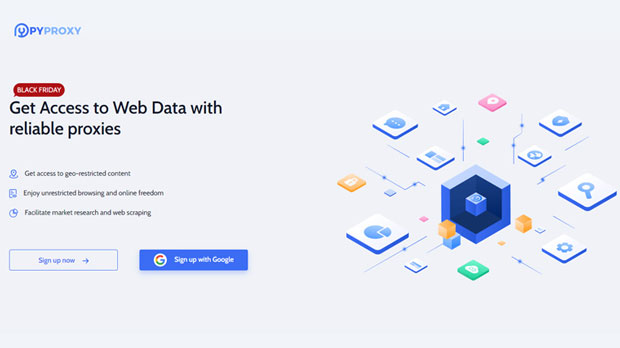The advancement of mobile internet technologies has led to increasing concerns regarding online privacy. One of the emerging solutions to mitigate these concerns is the use of HTTP proxies that can offer anonymity. However, the question remains whether HTTP proxies can effectively support the high anonymity features of mobile IPs. Mobile IP is designed to allow mobile devices to maintain connectivity while moving across networks, but it raises concerns about potential privacy vulnerabilities. In this article, we will explore how HTTP proxies can support or hinder the anonymity features of mobile IPs, the technical aspects involved, and the potential benefits and risks of using this setup. Understanding HTTP Proxies and Mobile IPHTTP proxies serve as intermediaries between users and websites. They act as a gateway that allows users to request web pages from servers while masking the user’s original IP address. This capability makes HTTP proxies an essential tool for users seeking anonymity or for businesses wanting to ensure privacy and security for their users. HTTP proxies are commonly used for various purposes such as bypassing geo-restrictions, managing network traffic, or enhancing privacy.Mobile IP, on the other hand, is a communication protocol designed to enable users to maintain a continuous internet session while roaming between different networks, such as transitioning from a Wi-Fi network to a mobile data connection. The protocol allows mobile devices to keep their IP addresses consistent, even when moving between different locations, ensuring that the device can continue using the same internet services without interruptions.However, while Mobile IP provides connectivity benefits, it also introduces challenges for anonymity. By preserving the same IP address across different networks, it makes it easier for online entities to track the user's movements and behavior. This tracking undermines the privacy benefits that many users seek.The Role of HTTP Proxies in Supporting AnonymityAnonymity online is crucial for privacy-conscious individuals and businesses. HTTP proxies can offer a layer of anonymity by hiding the user’s IP address. When users connect to the internet through an HTTP proxy, the websites they visit only see the proxy’s IP address, not the user's original IP. This means that the user's browsing activity is not directly tied to their real-world identity, providing an essential layer of privacy.However, not all HTTP proxies provide the same level of anonymity. There are three main types of HTTP proxies: transparent proxies, anonymous proxies, and high-anonymity proxies. Transparent proxies reveal the user's original IP address to the websites they visit, making them ineffective for privacy purposes. Anonymous proxies hide the user's IP address but may still send identifiable information that can be used to track the user. High-anonymity proxies, also known as elite proxies, provide the highest level of anonymity by masking the user's IP address and stripping all identifying information, making it virtually impossible for websites to detect the proxy’s use.Mobile IP and Its Privacy ImplicationsMobile IP is an essential technology for maintaining seamless internet connectivity while users move across different networks. However, its design does not inherently prioritize privacy. The consistent use of the same IP address across networks could potentially expose a user’s location and browsing behavior to entities with access to tracking technologies.This is where the challenge lies in combining mobile IP with HTTP proxies. While mobile IP allows users to maintain a constant IP address, HTTP proxies can add a layer of anonymity by masking the user's real IP address. However, for mobile IP to truly support high-anonymity features, the HTTP proxy must be capable of handling mobile IP’s dynamic nature and ensuring that the user’s identity remains masked throughout their internet session.Challenges of Integrating HTTP Proxy with Mobile IPIntegrating HTTP proxies with mobile IPs can be technically challenging, especially when ensuring that the high anonymity features are maintained. One key challenge is that mobile IP addresses are typically designed to be static or change only when the user switches networks. This can be problematic for users who rely on dynamic IPs provided by high-anonymity proxies, which may not always align with the fixed nature of mobile IPs.Additionally, mobile IP protocols often require a certain level of connectivity and communication between devices and their home proxies (the entity that tracks the mobile device’s movements). When an HTTP proxy is introduced into the equation, there may be complications in routing traffic through the proxy while maintaining the integrity of mobile IP’s functionality. This can lead to potential vulnerabilities, such as leaks in the user’s original IP address or insufficient encryption.Can HTTP Proxies Ensure High Anonymity for Mobile IPs?To ensure high anonymity for mobile IP users, HTTP proxies must meet several criteria. First, the proxy must support a high level of encryption to prevent data interception. Second, the proxy must hide the user's original IP address and any other identifiable information that could be used to track the user. Third, the proxy must be able to handle the mobility of IP addresses, ensuring that the user’s location or behavior is not exposed as they transition between networks.High-anonymity proxies, also known as elite proxies, are best suited for this role. These proxies ensure that no identifying information, such as the original IP address, is transmitted. They also prevent websites from detecting the use of a proxy, making it more difficult for websites to track the user’s movements across the internet.Benefits of Using HTTP Proxies with Mobile IPWhen integrated correctly, HTTP proxies can enhance the anonymity features of mobile IPs, providing users with a higher level of privacy. The benefits of using an HTTP proxy with mobile IPs include:1. Enhanced Privacy: HTTP proxies can mask the user’s real IP address, preventing websites from tracking the user’s online activities.2. Bypassing Geo-restrictions: With HTTP proxies, users can access content that may be blocked in their region. Mobile IP ensures that the user can continue accessing the content even as they move between networks.3. Security: High-anonymity proxies offer additional layers of encryption, protecting user data from potential threats like data interception and cyber-attacks.Risks of Using HTTP Proxies with Mobile IPDespite the benefits, there are potential risks involved in using HTTP proxies with mobile IPs:1. Technical Complications: Integrating mobile IP and HTTP proxies can be technically complex, and if not done correctly, it may lead to privacy breaches.2. Latency Issues: Routing traffic through a proxy can introduce additional latency, especially for mobile devices, which may already experience slower network speeds.3. Proxy Detection: Some websites and online services use advanced techniques to detect and block proxy traffic. While high-anonymity proxies can bypass many of these detection methods, they are not foolproof.ConclusionIn conclusion, HTTP proxies can support the high-anonymity features of mobile IPs, but only if they meet the necessary technical standards. High-anonymity proxies are most suitable for this task, as they offer the highest level of privacy and security. However, the integration of mobile IP and HTTP proxies comes with challenges, including technical complexity and the potential for proxy detection. For users seeking to maintain privacy while using mobile IP, it is essential to choose the right proxy and ensure that it is configured correctly to avoid compromising anonymity.
Aug 11, 2025


































































